In a bold and unexpected move, the Modi-led Central Government on April 30 announced its decision to conduct a nationwide Caste Census alongside the upcoming population census. The announcement, made after a high-level Cabinet Committee on Political Affairs (CCPA) meeting chaired by Prime Minister Narendra Modi, has sent shockwaves across the Indian political spectrum.

The timing is crucial—just days after a deadly terror attack in Pahalgam, Jammu & Kashmir, which had momentarily escalated tensions between India and Pakistan. Yet, this policy shift has successfully diverted political discourse from international crises to domestic social justice.
What Is the Caste Census and Why Does It Matter?
A Caste Census involves the enumeration of the population based on caste identity. It aims to provide accurate, data-backed insights into the caste composition of Indian society. This data becomes the foundation for policy formulation, welfare allocation, and political representation.
In India, where caste continues to shape access to resources, education, and employment, a caste census is not just a bureaucratic exercise—it’s a powerful political instrument. For marginalized communities, it means visibility. For political parties, it offers a roadmap to restructure their vote banks and refine electoral strategies.
Timeline of caste census
| Year/Date | Event |
|---|
| 1881 | The first caste census was conducted in India. |
| 1931 | The last caste census before independence was conducted. |
| 1951 | SCs and Scheduled Tribes (STs) documented. |
| 1961 | Union government allowed states to conduct their own caste surveys. |
| June 29, 2011 | SECC (Socio-Economic and Caste Census) launched in Sankhola village, West Tripura. |
| January 2017 | Centre accepted recommendations for identifying beneficiaries. |
| 2018 | Then Home Minister Rajnath Singh promised a caste-based survey. |
| July 2021 | Centre informed Parliament it won’t undertake a caste-based survey. |
| June 2, 2022 | Bihar cabinet approved a caste survey. |
| October 2, 2023 | Findings of the caste-based census were released. |
| April 30, 2025 | Centre approved plan to conduct a caste census. |
BJP’s U-Turn: What Triggered the Change?
Until recently, the Bharatiya Janata Party (BJP) had strongly resisted the idea of a caste-based census. In 2023, the BJP even opposed the Bihar government’s caste survey led by then Mahagathbandhan CM Nitish Kumar. Several party supporters moved court to block the initiative.
So, what explains this sudden change of heart?
1. Congress’ Narrative Was Gaining Traction
Congress leader Rahul Gandhi made the caste census a central poll issue. His rallies echoed with calls for “jitni aabadi, utna haq” (rights proportional to population), painting BJP as anti-Bahujan (OBCs, SCs, STs). The Congress-ruled states of Karnataka and Telangana had already conducted their own caste-based surveys.
This consistent messaging was beginning to resonate, especially in Hindi heartland states. The BJP couldn’t afford to let Congress own the narrative.
2. Pressure from Allies
BJP’s return to power in 2024 heavily relies on allies like Nitish Kumar’s JD(U) and Chandrababu Naidu’s TDP—both staunch supporters of caste enumeration. JD(U) had earlier championed the caste census in Bihar, while Naidu has often highlighted backward caste empowerment. Political pragmatism pushed BJP to align with their stance.
3. No-Loss Political Strategy
With several states independently moving forward with caste-based surveys, BJP realised that resisting the idea nationally could politically isolate them. Supporting the census now offers an opportunity to control the narrative and present themselves as inclusive and progressive—without alienating upper caste voters.
Historical Context: Caste Census in India
India last conducted a comprehensive caste census in 1931 during British rule. Post-independence, from 1951 onward, caste enumeration was discontinued, except for Scheduled Castes and Scheduled Tribes.
In 2011, the UPA government initiated a Socio-Economic and Caste Census (SECC). However, due to technical flaws and lack of political will, the caste data was never made public.
The absence of updated caste data has created a vacuum, impacting reservation policies, affirmative actions, and social welfare distribution. The new census could bridge this critical gap.
Political Implications: Who Stands to Gain?
Regional Parties
Parties like RJD, SP, DMK, and JD(U) have long rooted their politics in caste representation. Access to updated caste data can strengthen their claims for proportional reservation and welfare distribution.
Congress
Having consistently supported the caste census, Congress can claim moral victory. However, BJP’s move might neutralize this advantage by co-opting the issue.
BJP
With this strategic shift, BJP aims to send a clear message to Bahujan Samaj—that it is not anti-reservation or anti-social justice. It helps BJP expand its base among OBCs, a critical vote bank in states like Uttar Pradesh, Bihar, and Maharashtra.
What Lies Ahead?
If executed efficiently and transparently, the Caste Census 2025 could reshape the foundation of Indian democracy. It holds the power to redefine reservation policies, restructure political alliances, and most importantly, give long-overdue recognition to historically underrepresented communities.
However, its implementation must be accompanied by safeguards to avoid misuse for vote-bank politics or social division. The challenge for the Modi government is to ensure that the census becomes a tool for empowerment, not polarization.
A Political Reset
The decision to greenlight the caste census marks one of the most significant socio-political pivots in recent Indian history. For the BJP, it’s a calculated gamble that could redefine its relationship with the Bahujan electorate. For India, it’s a long-overdue step toward data-driven governance and true social equity.



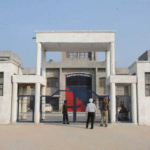
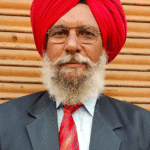
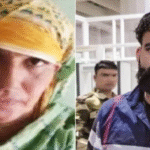


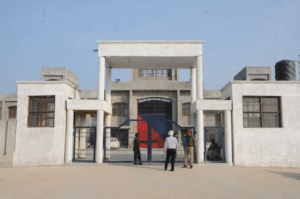
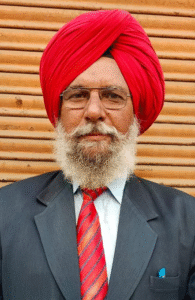
More Stories
India Appears Grander from Space, Says Astronaut Shubhanshu Shukla in Video Call with PM Modi
Calcutta Law College Gang Rape Case: Police Arrest Security Guard, Fourth Accused in Shocking Campus Crime
Hyderabad Couple Arrested for Live Streaming Sexual Acts on Mobile App to Earn Easy Money